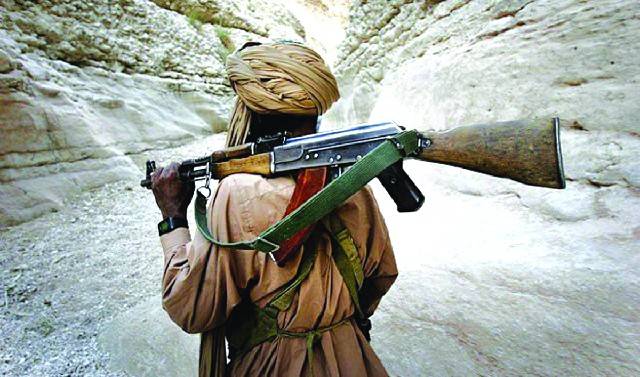
Prime Minister Imran Khan announced last month during his visit to Gwadar that his government was considering holding negotiations with Baloch nationalists in order to resolve the long-standing conflict in the province. He further said that the insurgents may be angry with the government because of past grievances, or India may have utilized them to destabilize Pakistan.
In the aftermath of this announcement by the prime minister, India once again became the center of the anti-terrorism narrative in the context of the conflict in Balochistan. Due to historical disagreements, Pakistan’s ties with India have only deteriorated over the decades. Tensions, distrusts and antagonisms always marked their engagements. Various attempts to strengthen the relationship have been made but none have been successful.
Peace in Balochistan has been a victim of Pakistan’s turbulent relations with India. There is no denying the fact that India is actively promoting acts of sabotage in Balochistan to destabilize Pakistan. Pakistan’s government has presented proof of India’s involvement at various international forums. The arrest of Indian spy Kulbushan Jadav from Balochistan is the main evidence of India’s interference in Balochistan.
Consequently, unrest in the country’s largest province has disrupted internal peace and security, giving multiple faces to the opposing nation’s hostility. As a result, foreign-funded violent competitors have taken on many identities. Tribal and ethnic groups, national divisions, sectarian extremists, warlords, drug-trafficking organizations, youth gangs, terrorists, militias, insurgents, and transnational criminal organizations are patterns of these types of organizations. These organizations are posing an existential threat to Pakistan by destabilizing its largest province.
Pakistan had 319 terrorism-related incidents in 2020, according to the South Asia Terrorism Portal (SATP). Terrorist incidents killed 357 people in Pakistan in 2020 (until December 21), according to Pakistan’s National Counterterrorism Authority (NACTA), which is a significant rise over the previous year.
Terrorism is undeniably provoked and reproduced across the country by a variety of variables, many of which are mutually interactive. New patterns of social inequality, disjunctive democratization processes, criminal networks, and other negative repercussions of globalization, and the perverse effects of the mass media are among them. To conduct terrorist attacks all over the country, it has been witnessed and investigated that different terrorist organizations were involved in recruiting and poisoning the youth.

Pakistan presently has more young people than it has at any time in its history. According to the UNDP Report of 2018, 64 percent of Pakistanis are under the age of 30 and 29 percent are between the ages of 15 and 29, an age group that is universally defined as the youth. There is no ignoring the fact that in Pakistan, terrorist strikes have overwhelmingly been led and carried out by young males. Likewise, this same demographic group is responsible for countless acts of terror in Balochistan.
However, when it comes to the debate around resolving the Balochistan conflict, the aspect of keeping youth away from terrorism is often neglected. For instance, the issue of how to prevent the youth from getting in the hands of the enemy and destabilizing Pakistan is not being widely debated at any forum. The existing programs for youth are not useful and they are not contributing to resolving the aforementioned problem in any way.
Youth programs are currently lacking in both quantity and quality. A wide gap between ambitions and livelihood alternatives is frequently noted among the youth of Balochistan. Youth perceive themselves to be in a state of social death, which characterizes the experience of young males who are unable to live a meaningful life in the face of persistent economic and social inequities. The opportunities of self-grooming are insufficient to bring about significant positive change on a large scale. Young people are left with no outlet to express their inner selves and as a result, they are frustrated and exploited by terror-based organizations.
When social circumstances deteriorate to this point, youth are forced into the “grey zone,” a life dynamic characterized by a chronic fear of the unknown. The distinctions between good and evil, innocent and criminal, moral and immoral blur at this moment.
Although Balochistan’s youth desire to be involved in productive activities, there are few opportunities, especially when compared to the country’s population. Therefore, from this moment onwards, the government needs to develop a strategy to ensure that youth does not get exploited by hostile countries to carry out acts of terror in Balochistan. This strategy must be broad-based and should be formulated after consulting all stakeholders including the youth organizations, student unions, academia, identity-based movements, and pressure groups. Once the strategy is formulated then it needs to be implemented at both tactical and operational levels. Without a strategy to tackle the exploitation of youth, no negotiations in Balochistan can be successful in ushering in an era of peace.
The writer is an assistant professor of sociology at SBK Women’s University, Quetta. She tweets at @DrShumailaAamir
In the aftermath of this announcement by the prime minister, India once again became the center of the anti-terrorism narrative in the context of the conflict in Balochistan. Due to historical disagreements, Pakistan’s ties with India have only deteriorated over the decades. Tensions, distrusts and antagonisms always marked their engagements. Various attempts to strengthen the relationship have been made but none have been successful.
Peace in Balochistan has been a victim of Pakistan’s turbulent relations with India. There is no denying the fact that India is actively promoting acts of sabotage in Balochistan to destabilize Pakistan. Pakistan’s government has presented proof of India’s involvement at various international forums. The arrest of Indian spy Kulbushan Jadav from Balochistan is the main evidence of India’s interference in Balochistan.
Consequently, unrest in the country’s largest province has disrupted internal peace and security, giving multiple faces to the opposing nation’s hostility. As a result, foreign-funded violent competitors have taken on many identities. Tribal and ethnic groups, national divisions, sectarian extremists, warlords, drug-trafficking organizations, youth gangs, terrorists, militias, insurgents, and transnational criminal organizations are patterns of these types of organizations. These organizations are posing an existential threat to Pakistan by destabilizing its largest province.
The issue of how to prevent the youth from getting in the hands of the enemy and destabilizing Pakistan is not being widely debated at any forum
Pakistan had 319 terrorism-related incidents in 2020, according to the South Asia Terrorism Portal (SATP). Terrorist incidents killed 357 people in Pakistan in 2020 (until December 21), according to Pakistan’s National Counterterrorism Authority (NACTA), which is a significant rise over the previous year.
Terrorism is undeniably provoked and reproduced across the country by a variety of variables, many of which are mutually interactive. New patterns of social inequality, disjunctive democratization processes, criminal networks, and other negative repercussions of globalization, and the perverse effects of the mass media are among them. To conduct terrorist attacks all over the country, it has been witnessed and investigated that different terrorist organizations were involved in recruiting and poisoning the youth.

Pakistan presently has more young people than it has at any time in its history. According to the UNDP Report of 2018, 64 percent of Pakistanis are under the age of 30 and 29 percent are between the ages of 15 and 29, an age group that is universally defined as the youth. There is no ignoring the fact that in Pakistan, terrorist strikes have overwhelmingly been led and carried out by young males. Likewise, this same demographic group is responsible for countless acts of terror in Balochistan.
However, when it comes to the debate around resolving the Balochistan conflict, the aspect of keeping youth away from terrorism is often neglected. For instance, the issue of how to prevent the youth from getting in the hands of the enemy and destabilizing Pakistan is not being widely debated at any forum. The existing programs for youth are not useful and they are not contributing to resolving the aforementioned problem in any way.
Youth programs are currently lacking in both quantity and quality. A wide gap between ambitions and livelihood alternatives is frequently noted among the youth of Balochistan. Youth perceive themselves to be in a state of social death, which characterizes the experience of young males who are unable to live a meaningful life in the face of persistent economic and social inequities. The opportunities of self-grooming are insufficient to bring about significant positive change on a large scale. Young people are left with no outlet to express their inner selves and as a result, they are frustrated and exploited by terror-based organizations.
When social circumstances deteriorate to this point, youth are forced into the “grey zone,” a life dynamic characterized by a chronic fear of the unknown. The distinctions between good and evil, innocent and criminal, moral and immoral blur at this moment.
Although Balochistan’s youth desire to be involved in productive activities, there are few opportunities, especially when compared to the country’s population. Therefore, from this moment onwards, the government needs to develop a strategy to ensure that youth does not get exploited by hostile countries to carry out acts of terror in Balochistan. This strategy must be broad-based and should be formulated after consulting all stakeholders including the youth organizations, student unions, academia, identity-based movements, and pressure groups. Once the strategy is formulated then it needs to be implemented at both tactical and operational levels. Without a strategy to tackle the exploitation of youth, no negotiations in Balochistan can be successful in ushering in an era of peace.
The writer is an assistant professor of sociology at SBK Women’s University, Quetta. She tweets at @DrShumailaAamir

